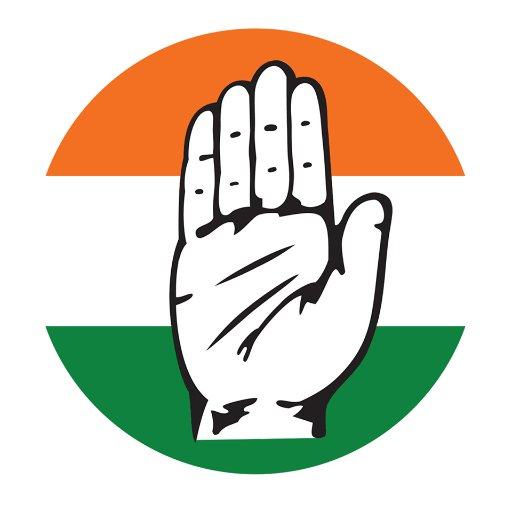Operation Sindoor’s Aftermath: Unpacking India’s Foreign Policy Vulnerabilities

- Anup Kumar Srivastava
Operation Sindoor—India’s military response on May 7, 2025, to the horrific Pahalgam terror attack of April 22—marked a significant turning point in the regional security landscape. While it was initially hailed as a tactical and operational success, its broader implications for India’s foreign policy and long-term strategic posture have since come under critical scrutiny, both domestically and internationally. A close examination of global and national media coverage highlights several weaknesses, unintended consequences, and strategic blind spots that India must address to reinforce its geopolitical standing.
Undoubtedly, the Indian Armed Forces demonstrated remarkable precision and professionalism in executing the objectives of ‘Operation Sindoor’. However, the same level of coherence and effectiveness was not evident in India’s diplomatic outreach and foreign policy handling. Key developments raised concerns—such as the U.S. President’s unexpected call for a ceasefire and offer to mediate, the Indian External Affairs Minister’s controversial statement suggesting prior communication with Pakistan about the air strikes, and the deployment of diplomatic delegations abroad without the inclusion of defense experts. Additionally, the muted international condemnation of Pakistan for the Pahalgam attack underscored India’s current limitations in rallying global support on issues central to its national security.
These events have triggered serious questions about the clarity, sovereignty, and direction of India’s foreign policy—particularly in its approach to counter-terrorism and the Kashmir issue. The contrast between military competence and diplomatic ambiguity suggests a pressing need for India to recalibrate its strategic communications and international engagements in order to reinforce its global credibility and safeguard its long-term national interests.
The Curious Case of the Ceasefire Announcement: A Diplomatic Quagmire
One of the most perplexing aspects of Operation Sindoor’s aftermath was the announcement of a ceasefire not by the Indian Prime Minister, but by US President Donald Trump. This unusual diplomatic intervention, highlighted by “The Many Failures of Operation Sindoor” (The Wire, May 23, 2025), raised significant questions about India’s diplomatic agency and its ability to manage the conflict independently. Such a public declaration by a third party could be interpreted as undermining India’s sovereignty, suggesting a perceived inability to control the escalation, or reflecting the US’ assertive mediation role in the region. This incident underscored a potential lack of seamless coordination or trust with key international partners, leading to an external actor taking the lead in de-escalation rather than India itself.
Challenges in Narrative Control and Counter-Propaganda: Losing the Information War
Several news outlets highlighted India’s struggle to effectively manage the information space and counter Pakistani misinformation during and after ‘Operation Sindoor’.
Digital Censorship and Freedom of Expression Concerns: ‘Operation Sindoor’s Digital Fallout: How India Weaponised Big Tech’ (The Friday Times, May 25, 2025) alleged that India attempted to control the narrative through digital censorship, ordering platforms like X (formerly Twitter) to block over 8,000 accounts, predominantly Pakistani. While intended to curb misinformation, this approach was criticized for potentially infringing on freedom of expression and could be perceived internationally as an attempt to suppress dissenting voices rather than win the information war through credible arguments. The article contended that such actions contribute to a “siege mentality” and that digital platform owners were “succumbing to political pressure without receiving credible evidence of violations.”
Reactive Communication Strategy: Has India lost the propaganda war to Pakistan after ‘Operation Sindoor’? Who is responsible? (Aaj Tak, May 21, 2025) questioned whether India had lost the propaganda war to Pakistan. The article criticized Pakistan’s alleged use of misleading videos, images, and false claims disseminated via its Inter-Services Public Relations (ISPR) on social media, often amplified by Chinese and Turkish state media. Although India’s Ministry of External Affairs and Press Information Bureau (PIB) issued factual refutations, these responses were often delayed and not effectively disseminated globally or on social media, indicating a reactive rather than proactive communication strategy. ‘The Guardian’ also reported that social media platforms were “inundated with misinformation from both Indian and Pakistani sources,” complicating the narrative and potentially escalating tensions. ‘Le Monde’ highlighted India’s delayed official communication, which allowed Pakistan to “shape the international narrative, leading to a perception that India was reactive rather than proactive”.
Perceived Lack of Unambiguous International Support/Diplomatic Isolation
Despite India’s assertions of international support for its right to self-defense, some analyses pointed to a less-than-resounding backing from key global players.
“No Significant Country Unambiguously Backed Indian Actions”: “The Many Failures of Operation Sindoor” (The Wire, May 23, 2025) controversially asserted that Operation Sindoor was a “failure at the tactical, strategic, and diplomatic level”. A significant point raised was that “no significant country unambiguously backed Indian actions, neither in the neighbourhood or in the wider world”.
Conspicuous Absence of Key Allies: ‘Operation Sindoor – Important takeaways’ (Times of India Blogs, May 23, 2025) noted the “conspicuous absence” of Australia and Japan (from the QUAD alliance) during Operation Sindoor’s unfolding, suggesting they might have been “chary of antagonising China”. The author also stated that the “USA showed no concerns for India and failed to condemn Pakistan,” implying that the international community might not have fully aligned with India’s framing of the situation or its chosen response. Al Jazeera further opined that India’s attempt to project strength through Operation Sindoor “may have backfired,” as it “exposed vulnerabilities in India’s foreign policy and military preparedness, potentially undermining its image as a regional hegemon.”
Internal Critiques and Political Management of the Crisis
Domestic political discourse in India also highlighted perceived weaknesses in the government’s handling of the crisis.
Lack of Consensus and Politicization: Shiv Sena (UBT) leader Sanjay Raut criticized the government’s decision to send a multi-party delegation abroad, dismissing it as a “baraat (wedding procession)” and questioning its purpose. He alleged that ‘key Opposition parties’ were not consulted, indicating a potential failure to forge a united front on foreign policy. Furthermore, opposition leaders accused the Modi government and the BJP of politicizing ‘Operation Sindoor’ for electoral gain. Raut remarked, “Our soldiers carried out ‘Operation Sindoor’, but there’s now a race to claim credit. The PM is leading that race”. This highlights a significant challenge in maintaining national unity and depoliticizing military actions, which can undermine foreign policy credibility and national consensus.
Strategic Communication and Clarity of Objectives
Some analyses pointed to potential ambiguities in India’s strategic communication, particularly concerning the escalation ladder and long-term objectives.
Delayed Response and Objectives: “On India-Pakistan Conflict, The United States Needs to Tread Carefully” (Council on Foreign Relations Expert Brief by Manjari Chatterjee Miller, May 7, 2025) noted that the “two weeks” it took for India to respond to the Pahalgam attack suggested that policymakers were “carefully considering all options to avoid a debacle”. While a measured response can be a strength, a prolonged deliberation period might also be perceived as a lack of immediate decisive action or a struggle to define clear, swiftly achievable objectives for retaliation.
Doubtful Deterrence: “Post-Sindoor, A New Reality for India and Pakistan” (Observer Research Foundation via Eurasia Review, May 17, 2025) observed that “if the objective of ‘Operation Sindoor’ was deterrence against future terrorist attacks, it’s simply impossible to ensure.” This suggests that while tactical successes might have been achieved, the long-term strategic goal of deterring cross-border terrorism remains a complex foreign policy challenge, requiring continuous recalibration and clearer articulation of achievable objectives beyond immediate retaliation. “Operation Sindoor — a case of doubtful deterrence” (The Hindu, May 14, 2025) further underscored this point.
The Unintended Stock Market Ripple Effect: A Nuanced Economic Fallout
‘Operation Sindoor’ had an unexpected and contrasting impact on global defense stocks:
Dassault Aviation’s Decline: Dassault Aviation, the manufacturer of Rafale fighter jets used by the Indian Air Force, experienced a notable decline of over 5% in its share price following ‘Operation Sindoor’ on May 7, 2025 (Mint, May 20, 2025). This decline is counter-intuitive for a defense manufacturer whose products were actively deployed. It could suggest investor concerns about the limited scope or perceived strategic outcome of the operation, doubts about future orders, or broader market anxieties about regional instability impacting supply chains or long-term defense spending.
Chinese Defense Firms Soar: Conversely, Chinese defense firms, particularly AVIC Chengdu Aircraft, responsible for Pakistan’s J-17 and J-10C fighter jets, saw a significant rise in stock value. Some Chinese defense stocks even surged by up to 20% on Thursday, May 8, 2025, totaling a 36% increase in just two days. This sharp rise indicates that escalating tensions between India and Pakistan were perceived by investors as an opportunity for increased defense spending and potential arms deals for Chinese manufacturers. This highlights China’s strategic gains from regional instability, potentially at India’s expense in terms of perception and influence.
The Overlooked Internal Dimension of Terrorism
While ‘Operation Sindoor’ was lauded as a tactical and operational success, its strategic efficacy in diminishing the long-term terrorist threat remains uncertain. Critical analyses, particularly from The Hindu (May 14, 2025), pointed out a significant oversight in the national discourse following the operation. The focus regrettably centered almost exclusively on foreign policy and the external application of military force, neglecting the internalization of terrorism in Jammu and Kashmir (J&K).
The Pahalgam terror strike, though perpetrated by Pakistan proxies, underscored that while Pakistan bears substantial accountability, local dynamics related to identity, marginalization, repression, and political disenfranchisement have played pivotal roles in fueling the insurgency since 1989. These internal vulnerabilities provide Pakistan with fertile ground to foment trouble. Therefore, “winning Kashmir rather than defeating Pakistan” necessitates a holistic approach that addresses the complex interplay between external sponsorship and internal dynamics, defying simplistic military solutions. The continuous debate on national security and anti-terror policies in a constitutional democracy like India also highlights the need for robust parliamentary discussions and consensus-building, rather than truncating democratic processes under the guise of national security.
In conclusion, newspaper coverage—both Indian and international—published during and after ‘Operation Sindoor’ highlighted several critical challenges confronting India’s foreign policy. These included the difficulty in managing the information narrative and countering hostile propaganda, the apparent lack of strong and unequivocal international support, domestic political criticism regarding the strategic intent and potential politicization of the response, and persistent questions about the long-term effectiveness of kinetic actions in deterring cross-border terrorism. While many reports acknowledged India’s military resolve and technological prowess, critical analyses emphasized the inherently complex and multidimensional nature of foreign policy. In this domain, military strength must be bolstered by proactive diplomacy, strategic communication, and consistent efforts to forge international consensus and maintain internal political coherence. Moreover, the contrasting economic outcomes for Indian and Chinese defense contractors in the aftermath further underscore the unpredictable and far-reaching implications of military engagements on the global stage.
Historically, India maintained a clear delineation between allies—most notably the USSR—and adversaries, such as Pakistan and China, and received reliable support from its allies during times of conflict. However, this clarity began to evolve as India adopted a non-aligned foreign policy, guided increasingly by pragmatic considerations of national interest. While it continued to rely on Russia for defense imports, India simultaneously expanded its economic and strategic engagement with the United States and other Western powers. Despite notable improvements in relations with the U.S. and several European nations, it is equally evident that India’s relationships with many of its neighbors have steadily deteriorated. As a result, the once-distinct line between allies and adversaries has blurred, leaving India without a dependable, all-weather partner.
This situation brings to mind Michael Porter’s concept of being “stuck in the middle,” where an entity attempts to pursue two conflicting strategies—cost leadership and differentiation—without a clear focus. The result is often suboptimal performance and strategic vulnerability. Similarly, India’s foreign policy appears caught between strategic autonomy and alliance-building, struggling to strike a balance that ensures both national security and global influence.
The author is freelance writer and trainer, brings rich insights into the intersection of finance and economics through his research & writing with a strong background in business studies & corporate analysis.







